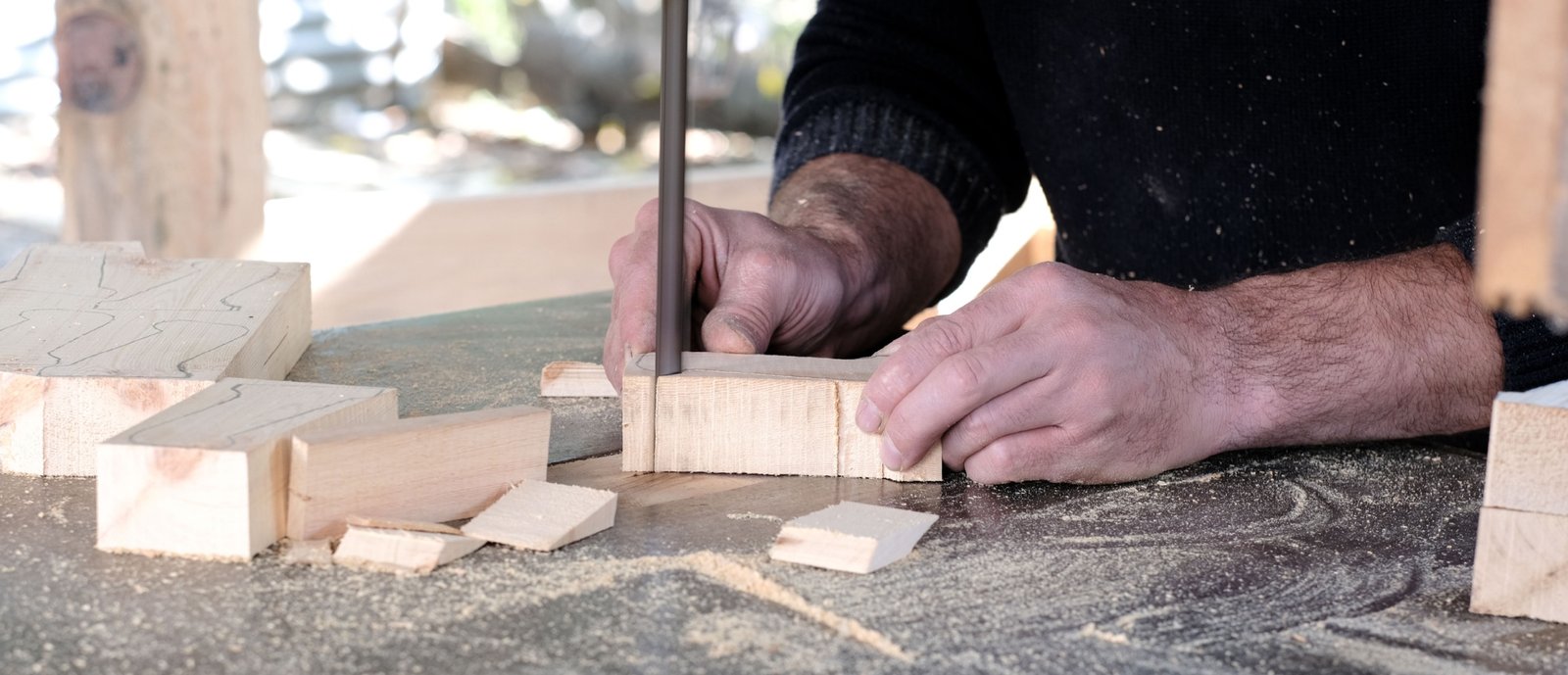No products in the cart.
Have you ever wondered how the wooden structures around you are built? From the chair you’re sitting on to the house you live in, wood plays a big role in our lives. So, what are carpentry and joinery, and why are they so important? These two skills are key to making things with wood.
In this blog, we’ll look at what these professions involve, their importance, and how they work together. Moreover, we will also explore the career opportunities you can pursue in carpentry and joinery.
What is Carpentry?
Carpentry involves the construction of wooden frameworks. Carpenters work on-site, handling tasks such as building walls, roofs, and floors. They use a variety of tools to ensure that structures are built to precise specifications. Therefore, carpentry is crucial for creating the backbone of any wooden structure.
Moreover, carpenters are responsible for interpreting blueprints and ensuring that the construction meets safety standards. They often work closely with other tradespeople, such as electricians and plumbers, to ensure that all aspects of a building project are coordinated. As a result, carpentry is a foundational skill in the building industry.
Some examples of carpentry types include Rough Carpentry, Finish Carpentry, and Cabinetry.

What is Joinery?
Joinery, on the other hand, focuses on the assembly of wooden parts without the use of nails, screws, or other foreign materials. Joiners typically work in workshops, crafting items such as doors, windows, and furniture. Moreover, they use techniques like dovetailing and mortise-and-tenon joints to create strong, lasting connections between wood pieces.
Thus, joinery is more about precision and craftsmanship. Joiners need to have a keen eye for detail and a steady hand to produce high-quality finishes. They often work with a range of materials, including different types of wood and veneers, to create bespoke pieces tailored to clients’ needs.
The Importance of Carpentry and Joinery
Carpentry and joinery are often seen as foundational skills in the woodworking industry. However, they encompass much more than just basic woodwork. In fact, their influence spreads across many sectors, including construction, furniture making, and interior design. As a result, understanding what carpentry and joinery entail can provide deeper insights into these trades. The key aspects of these crafts include:
- Craftsmanship: This involves a deep understanding of the techniques and tools used to create various designs.
- Precision: Accurate measurements and cuts are vital for ensuring that pieces fit together perfectly.
- Durability: Well-executed carpentry and joinery enhance the longevity of structures and furniture.
- Aesthetic Appeal: The creative aspect ensures that items are not just functional but also visually appealing.
- Sustainability: Awareness of environmentally friendly practices is essential in today’s woodworking industry.
What Tools Are Needed for Carpentry and Joinery?

For anyone interested in pursuing a career in these fields, it’s essential to understand the various tools used. Here’s a list of common tools needed:
- Hand Saw: Used for cutting wood with precision.
- Chisel: Ideal for making joints and intricate designs.
- Hammer: A staple for driving nails and assembly.
- Plane: Used to smooth surfaces and adjust the thickness of wood.
- Square: Ensures that angles are accurate and true.
Moreover, modern carpenters and joiners often use power tools, such as electric saws and drills, to increase efficiency and precision. However, traditional hand tools remain important for detailed work and finishing touches.
Joinery Techniques

Joinery techniques are essential in producing strong, lasting connections between wood pieces. Some common techniques include:
- Mortise and Tenon: This classic method involves inserting a tenon into a corresponding mortise hole, providing a strong joint.
- Dovetail: Known for its interlocking design, this technique is often used in drawer construction for its strength and aesthetic appeal.
- Biscuit Joint: Utilising oval-shaped wooden biscuits, this method aligns and strengthens joints, especially in panel construction.
- Lap Joint: Overlapping two pieces of wood, this simple technique is often used in framing.
- Finger Joint: Similar to dovetail but with straight cuts, it is used for joining long pieces of wood.
These techniques require skill and practice to master. Thus, education and training play crucial roles in developing these skills.
Education and Training Needed for Carpentry and Joinery
Aspiring carpenters and joiners can benefit from apprenticeships and formal education. Apprenticeships provide hands-on experience and mentorship from seasoned professionals. Moreover, formal education can offer a deeper understanding of materials, design, and safety standards.
As a result, those who invest time in learning and sharpening their skills can shine in these professions. The demand for skilled carpenters and joiners remains strong, with opportunities in both residential and commercial construction.
Career Opportunities in Carpentry and Joinery
Carpentry and joinery offer a range of career opportunities in the UK, each with its own salary expectations. As demand for skilled craftsmen grows, here are some potential paths and their average salaries:
- Residential Carpenter: Focuses on home construction and renovations, earning between £25,000 and £35,000 annually.
- Commercial Carpenter: Engages in larger projects like office buildings, with salaries ranging from £30,000 to £40,000.
- Joiner: Crafts doors and windows in workshops, typically earning £25,000 to £35,000 per year.
- Cabinet Maker: Designs and builds custom furniture, with salaries around £20,000 to £30,000.
- Project Manager: Oversees construction projects, earning between £40,000 and £60,000, depending on experience.
Conclusion
To sum up, understanding what is carpentry and joinery not only enlightens one about the woodworking process but also highlights their significance in everyday life. As you appreciate the craftsmanship that goes into creating our wooden structures, you gain a greater respect for the skills involved in this traditional trade. Hence, whether you are an aspiring carpenter or simply someone who enjoys beautiful wooden items, the knowledge of these skills enhances appreciation and value in the crafted woodwork. Furthermore, to learn more in-depth about carpentry, you can enrol in the Carpentry Course at the Open Learning Academy.





